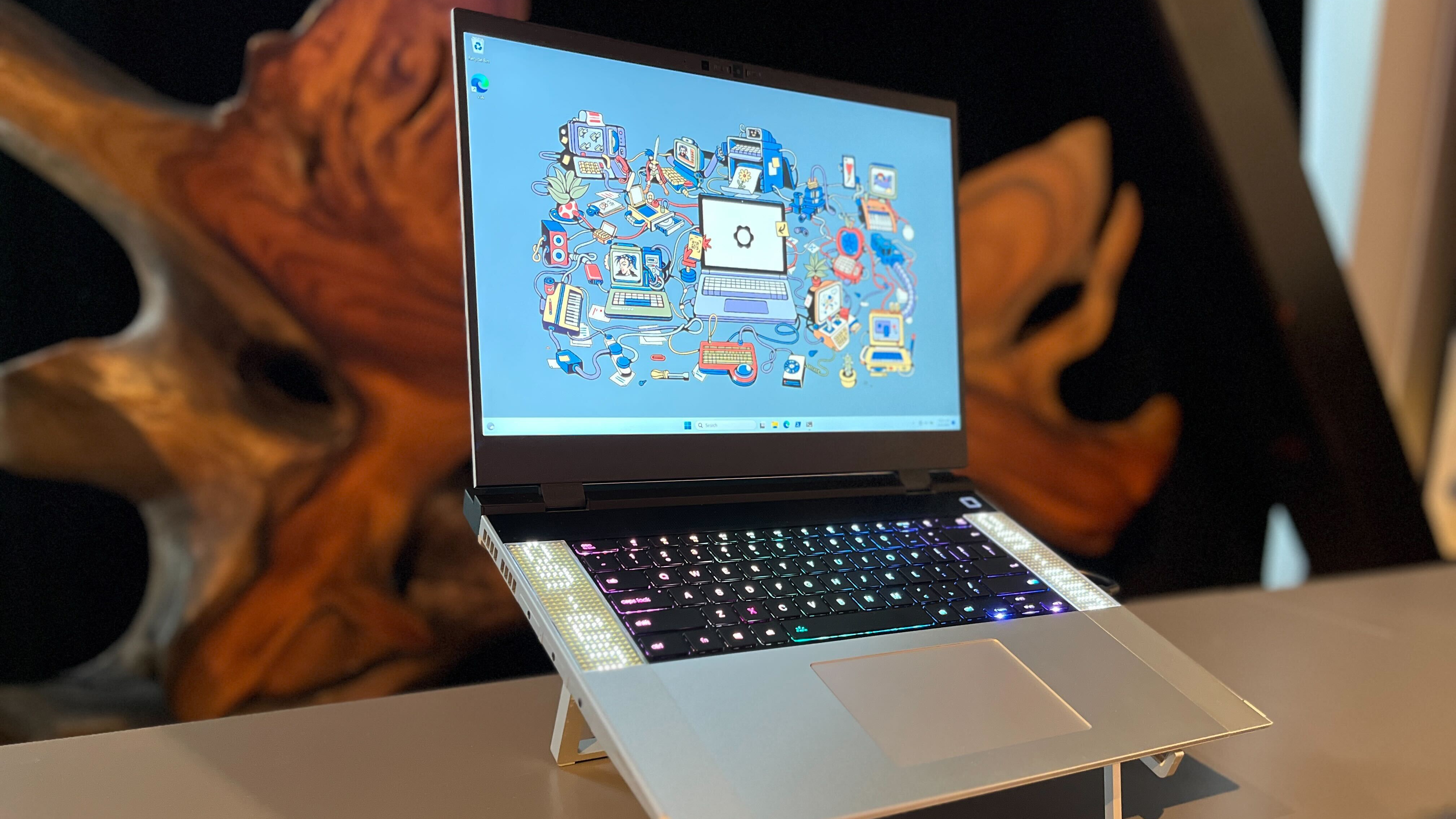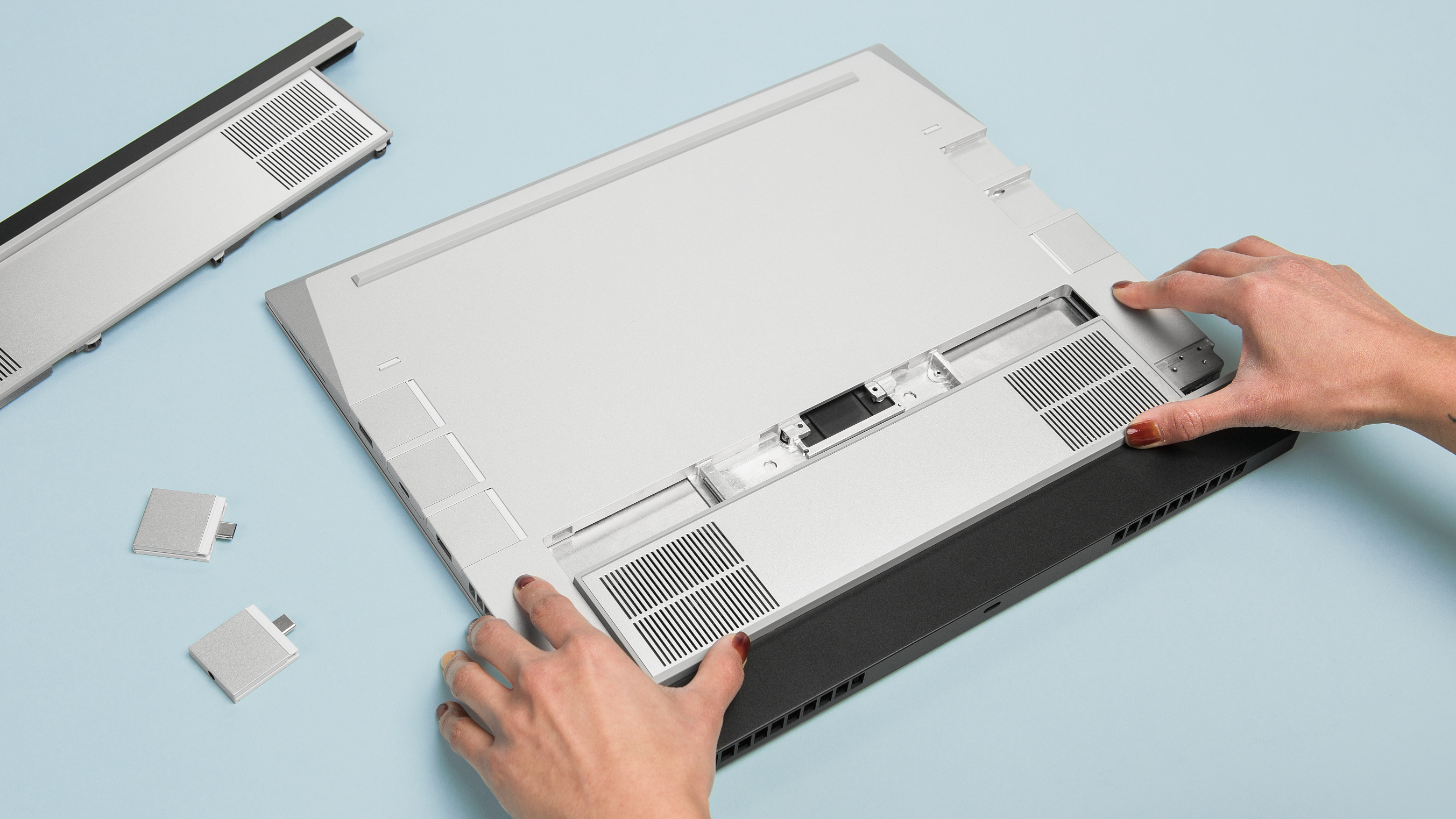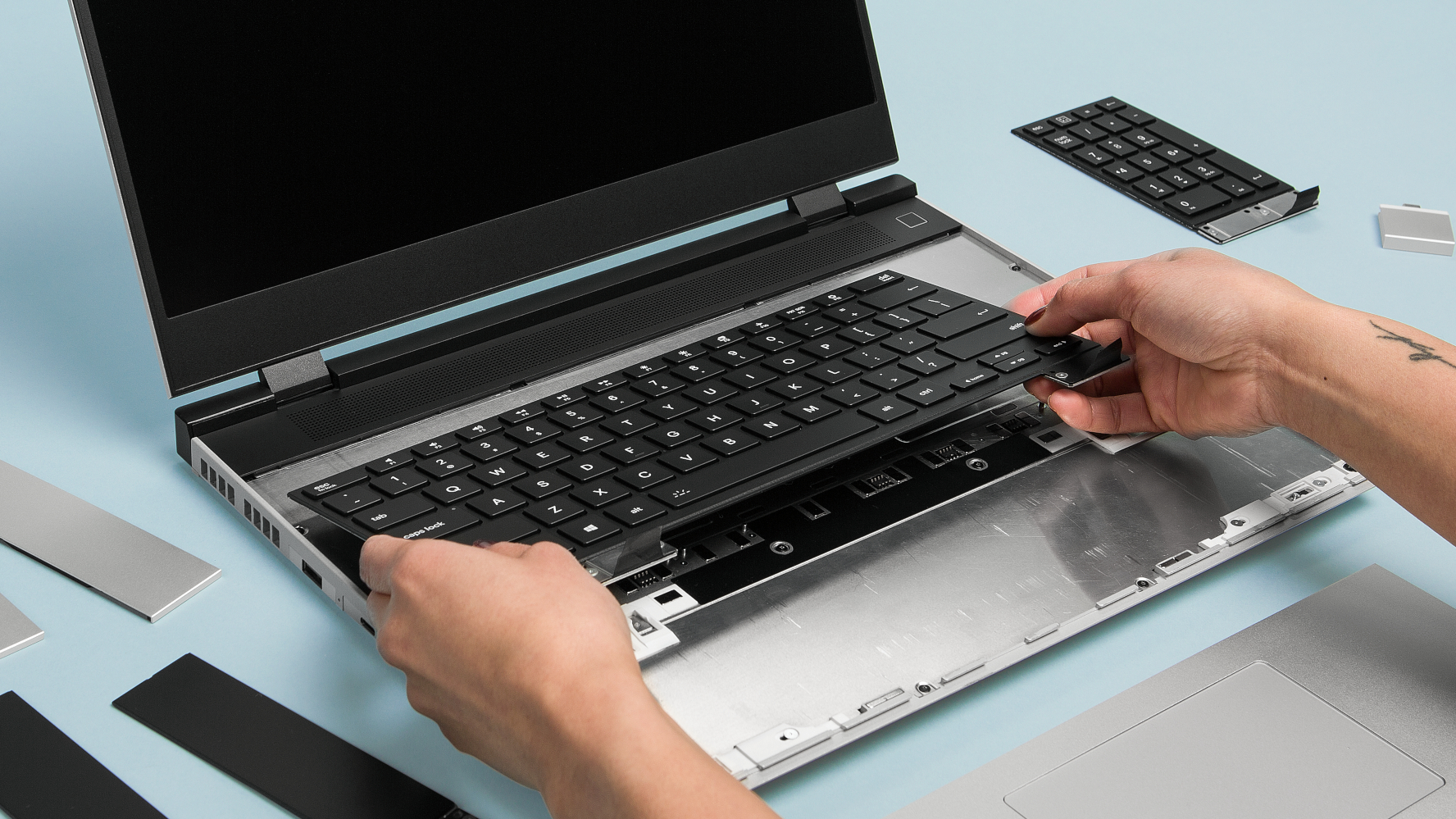Framework is making the world’s most exciting laptops right now — here’s why
The Framework Laptop 16 is a machine you need to know

I saw a vision of the future of laptops this week in San Francisco.
I was at a press event for Framework, the modular DIY laptop company, which launched the remarkably upgradable and repairable 13-inch Framework Laptop in 2021. It's remained one of my favorite laptops ever since—and I help oversee laptop reviews here at Tom's Guide, so I touch dozens of new laptops every year.
When I heard Framework was hosting a "Next Level" launch event in San Francisco today (March 23) to debut new hardware, I braved morning bridge traffic to see what's next for the company after the launch of the Framework Laptop Chromebook Edition last year.
I wasn't disappointed. In addition to updated models of its 13-inch Framework Laptops (starting at $849, now with AMD CPU options for the first time) and a new $39 Cooler Master case you can mount a Framework Laptop mainboard in to make a small PC, the company unveiled its bigger, beefier Framework Laptop 16.
It's a modular 16-inch laptop pitched as "the holy grail for gamers, creators and others who need power" thanks to its larger screen and upgradable components, including a discrete laptop GPU. But to me, it's more than that: It's the most exciting laptop I've seen all year.
That includes everything I saw back in January at the Consumer Electronics Show, because even the best laptops of CES 2023 are fundamentally less repairable, upgradable and inventive than this new Framework Laptop.
The Framework Laptop 16 is basically a larger version of the existing Framework Laptop with a more complicated design that gives it more versatility and power. While the company hasn't told us the full story on this laptop yet, including key details like pricing and what components will be on offer (which makes sense since it doesn't become available for pre-order until the spring, and it won't start shipping until Q3 2023), I'm awfully excited about what we do know.

The Framework Laptop 16 is basically the first gaming laptop that encourages you to upgrade the graphics card rather than upgrade to a new laptop—and that's a huge gesture of respect for customers' intelligence, rights and wallets."
Most notably, the Framework Laptop 16 will have a new Expansion Bay system on the rear of the laptop which allows owners to swap in various modular components, from graphics cards to AI accelerators, sold by either Framework or members of the Framework community.
If that sounds familiar, it's because it's basically how the Framework Laptop's Expansion Card system works (sans fans): You purchase whatever Expansion Cards you want (each of which typically have extra storage space or a single port, like HDMI or USB-A) and slot them in and out of the laptop's four USB-C Expansion Card slots as you need them.
The bigger Framework Laptop 16 will support the Expansion Card system and offer six slots (instead of four) in addition to the Expansion Bay, which accepts its own more powerful modules. Since these can include graphics cards (presumably at least as powerful as the latest Nvidia GeForce RTX 4000 series laptop GPUs), the Framework Laptop 16 is basically the first gaming laptop that encourages you to upgrade the graphics card rather than upgrade to a new laptop—and that's a huge gesture of respect for customers' intelligence, rights and wallets.
The process of swapping out GPUs on a Framework Laptop 16 ought to be pretty easy too, thanks to the company's track record of providing easy-open hardware that's clearly labeled and well-documented. These efforts are a big reason why Framework's products are so exciting: Just about everything is open-source and supported with documentation, so there's a good chance passionate community members will do more with these laptops than anyone at the company can imagine.
The Framework Laptop 16's new Expansion Bay system supports high-speed data transfer via a custom-designed PCIe x8 interface, for example, and Framework envisions a future where owners can purchase not only graphics card modules for it but external GPU enclosures that work with any laptop via USB-C, 16TB storage banks, card readers, video capture devices and more.

Then there's the keyboard. The keyboard and trackpad on the original Framework Laptops were always replaceable, but you're pretty much limited to swapping in one layout of keys for another. The new Framework Laptop 16 makes things more interesting with a new "Input Module" system that gives you a lot more freedom to mix and match components on your Framework's keyboard deck.
The new system is divided up into small, medium and large components which can be arranged in custom configurations to create your own (relatively) unique keyboard and touchpad arrangement. Company chief Nirav Patel spent a lot of time during today's event talking up how useful this is when you want to swap in or remove a numpad, but you can also do things like add LED light strips, swap in a touchscreen, or perhaps even hook up a slider with haptic feedback. As long as the module works via USB 2.0 and is under 3.77mm in height, according to Framework's documentation, the sky's the limit.
You can see why this is so exciting: I've never heard of a laptop that lets you customize your keyboard to this degree, let alone swap in GPUs or other beefy upgrades as necessary. While Framework has a lot of promises to keep when it starts shipping these laptops late in 2023, the fact that it's swinging this hard at delivering a more repairable, user-upgradable alternative to powerhouses like Apple's MacBook Pro 16-inch and the Samsung Galaxy Book 3 Ultra is fantastic to see.
It's the sort of thing I wish more laptop makers would do, and I can't wait to get my hands on a Framework Laptop 16 review unit later this year so we can see how well it performs in our testing lab. Stay tuned!
More from Tom's Guide
Sign up to get the BEST of Tom's Guide direct to your inbox.
Get instant access to breaking news, the hottest reviews, great deals and helpful tips.

Alex Wawro is a lifelong tech and games enthusiast with more than a decade of experience covering both for outlets like Game Developer, Black Hat, and PC World magazine. A lifelong PC builder, he currently serves as a senior editor at Tom's Guide covering all things computing, from laptops and desktops to keyboards and mice.
